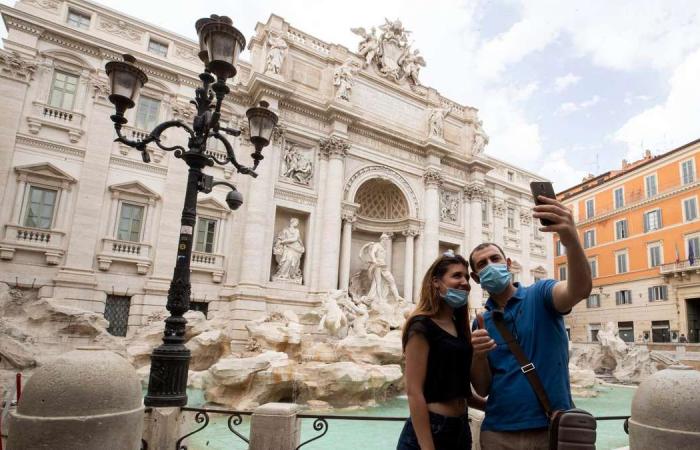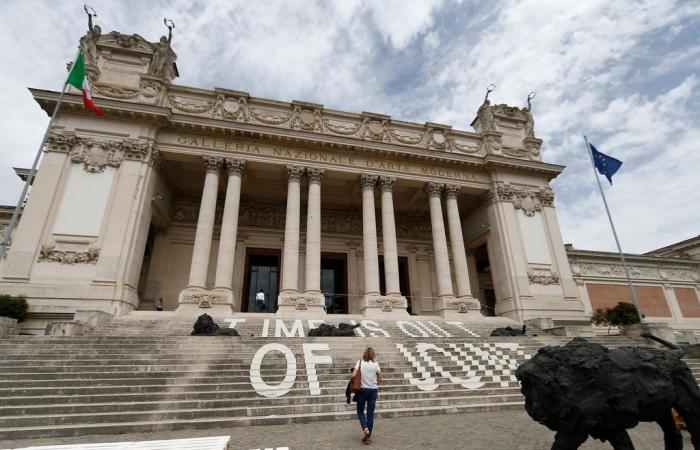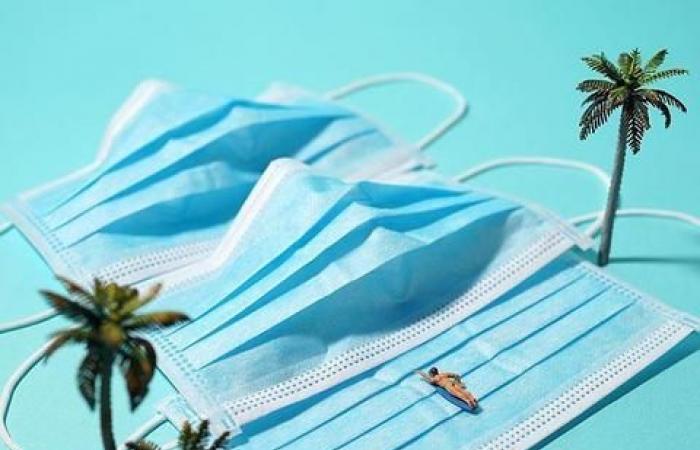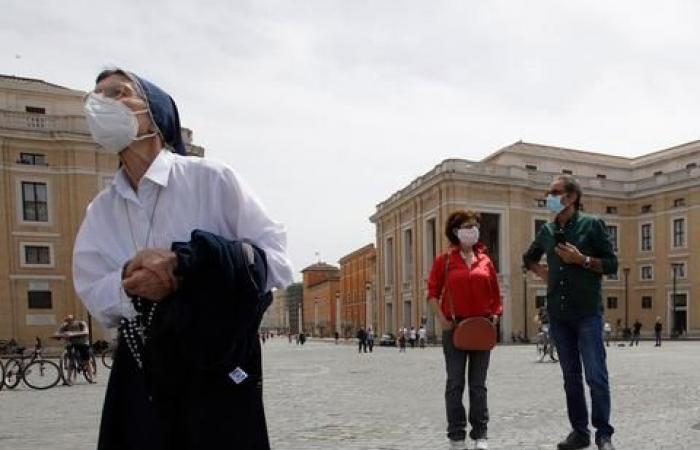Thank you for your reading and interest in the news Coronavirus: Europe's top museum directors say everything has changed and now with details
Hind Al Soulia - Riyadh - Museum directors across Europe are making tentative plans to operate under social distancing as nations emerge from lockdown.
After months of government-imposed lockdowns to deal with the Covid-19 outbreak, directors of museums and exhibitions face a growing list of problems and are working on radically overhauling how they do business.
Tourists have been grounded, museums are operating with a large deficit and curators and staff face the task of convincing an uneasy public that they can be safe and still enjoy exhibitions under social distancing measures.
Speaking at an online seminar organised by the Italian embassy in London, Gabriele Finaldi, director of Britain’s National Gallery, said until tourists returned, galleries were going to have to appeal more to local visitors.
“Our museums are places that act as a magnet for tourism to those particular cities, whether it is London, Naples, Milan or Paris,” Mr Finaldi said.
“We will be working very much more with our local audiences. That is probably very much a good thing."
Xavier Bray, director of The Wallace Collection in the UK, said rekindling confidence and rethinking areas such as cafes in museums and exhibitions was also a challenge.
“The main thing is going to be earn the confidence of our public," Mr Bray said.
"There is tourism on one side, but then museums are also great meeting places, where people can find themselves not only with works of art but also with their friends.
“There will be lots of experimentation but I think it is very much going to be baby steps.”
We will be looking very closely how other models work
Matteo Lafranconi, director of Le Scuderie del Quirinale in Rome, said he would work carefully with colleagues to see how the public responded to museums reopening.
“We need to see what the response of the audience will be,” Mr Lafranconi said.
"We need the support of their attention and we need to see if it is working. It needs to be proved in the next few days.”
On Monday, the Acropolis in Greece welcomed visitors and in Italy archaeological sites and public parks opened for the first time.
In Germany, museums were allowed to open earlier in May but directors reopened their attractions cautiously, making sure their employees and the public were ready for the unprecedented changes to their spaces.
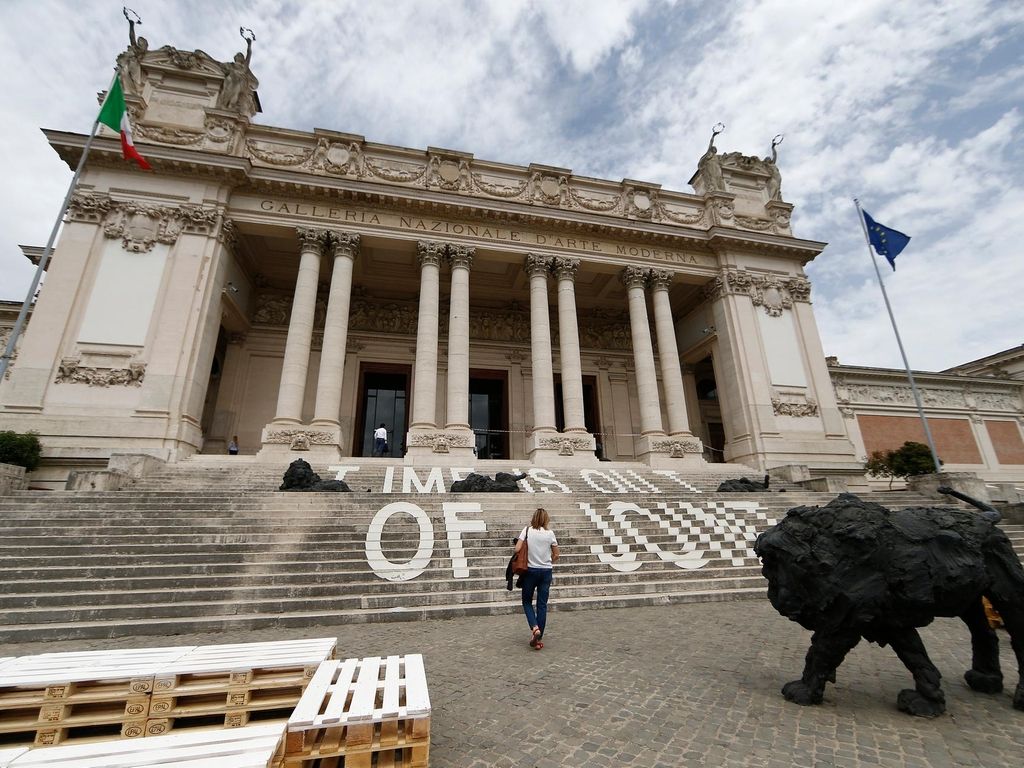
Countries around the world at different stages in the pandemic are wrestling with decisions on when to ease restrictions, weighing the threat to life against that to economic survival.
More than 4.71 million people are reported to have been infected by the coronavirus and 312,826 have died, recent figures show.
Italy, with the third highest death toll in the world, is reopening, as other European nations such as Britain, which finds itself behind only the US in terms of deaths, has kept most public spaces closed.
The onset of the Covid-19 pandemic has threatened the financial stability of many of Europe’s most prestigious institutions, including those that are partly funded by the government.
In March, Germany’s federal government unveiled a €50 billion (Dh200.45bn/US$54.58bn) aid package to support the country’s creative and cultural sectors.
Mr Bray called for a similar kind of government response in Britain to show the public that life was returning to normal.
“It is very much the government that should come up with a recovery plan, very much like the German museum system and needs to put us back on our feet,” he said.
“The government could think really hard about using the museum as a way of demonstrating that our society is coming back to some kind of normality, that museums are open."
By artist @tanaka_tatsuya, whose work is part of a Miniature Life exhibition in Fukushima, Japan. Via @tanaka_tatsuya / Instagram
In a work reminiscent of an Edward Hopper painting, Johanna Tordjman depicts a lonesome figure looking out to an image of an empty street. Via @j.tordjman / Instagram
Dave Pollot's still life series includes cleaning materials that are in demand during the coronavirus pandemic. Via @davepollotart / Instagram
Ertan Atay's work often involves reimagining well-known images and paintings. Via @failunfailunmefailun / Instagram
Artist and photographer Marius Sperlich produced this image as a way to share health and safety guidelines for Covid-19. Via @mariussperlich / Instagram
Catherine White, a director, writer and art director based in Montreal, launched #Coronartbalance, “a kinder, gentler virus that awakens creative minds”, which is an invitation to compose sculptures with what surrounds us at home. Via @cathwhitecath / Instagram
Photographer Jeremy 'Jerm' Cohen, who lives and works in Brooklyn, captures this moment of rooftop sport. Via @jermcohen / Instagram
'Infected Childhood', by AOS, commentingon the impact of Covid-19 on the psyche of children. Via @aos.art / Instagram
Social distancing on the beach. Artwork by Santi P. Seoane. Via @santi_p.seoane / Instagram
Part of a series of portraits by Danae Savage depicting life in quarantine. Via @dnicolephotog / Instagram
A digital artwork by Icy and Sot, with a caption that says: "These days are reminding us that we are all equal, regardless of our race, culture, religion or gender." Via @icyandsot / Instagram
Toilet paper is a recurring motif in current pandemic art. Via @luisamariabenito / Instagram
"No gloves were harmed in the making of this picture," writes Paola de Grenet, a photographer living in Barcelona. Via @paola_de_grenet / Instagram
Florence's cityscape, with people busy cooking in their homes. Created by painter Pierpaolo Rovero. Via @pierpaolorovero / Instagram
Fantasy features highly in artist Indigo's digital creations. Via @indg0 / Instagram
Contained at home: a digital work by photographer Zamurovic. Via @zamurovic.photography / Instagram
Artist CJ Lee (@cheoljoolee) said of this work, "I was planning to do simple sketch when beginning, but changed my mind because I saw some of nurse's face. Truly respect the front-line healthcare workers. Thank you all for your dedication and sacrifice". Via @cheoljoolee / Instagram
By Emily Kask (@ek_the_pj): "I’m way too paranoid to touch my phone while I’m out grocery shopping and don’t want to cross contaminate. I wanted a way to write my list down without creating any extra trash." Via @ek_the_pj / Instagram
A coronavirus spread: wipes, disinfectant, toilet paper, gloves and a worrying news story. Created by Jessica Walsh. Via @jessicavwalsh / Instagram
The artist Ammi creates a dark portrait of media consumption in time of Covid-19. Via @eyesofammi / Instagram
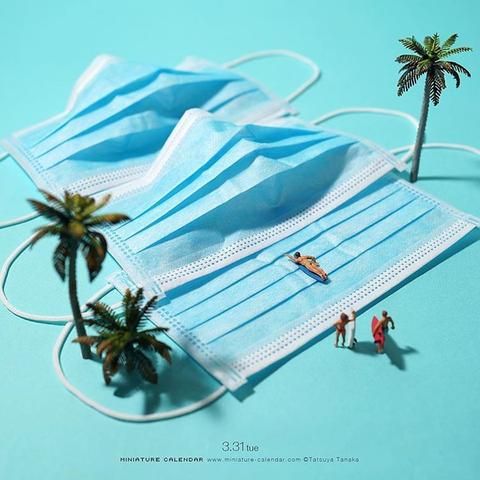
Mr Finaldi said: “I think there is some quite serious thought going on now as to whether the model we have used whether that's really sustainable into the future.
“We will be looking very closely how other models work abroad and how they change abroad and whether there is anything we can learn in this country."
A nun wearing a face mask looks up at the window of Pope Francis' studio overlooking St Peter's square as he appears to give his blessing after the Angelus prayer, at the Vatican. AP Photo
Pope Francis looks from the window of the Apostolic palace overlooking St Peter's Square before his blessing to faithful. AFP
People wait for Pope Francis to give his blessing from the window of the Apostolic palace overlooking St Peter's Square. AFP
Soldiers of the Italian 7th CBRN defence regiment 'Cremona' are deployed to sanitise the San Francesco D'Assisi Cathedral, in Civitavecchia, near Rome, Italy. EPA
A medical worker taking a swab sample from a child to be tested for Covid-19, in a street in Wuhan, in China's central Hubei province. AFP
Lydia Hassebroek says hello to her friend Rose through her kitchen window in Brooklyn, New York, US. Reuters
People sit on the grass in Central Park in New York City, amid the coronavirus pandemic. AFP
Nurses assigned to the Infectious Diseases Unit at the Kenyatta University Hospital dance during a Zumba class held at the hospital compound in Nairobi. AFP
Buses are seen parked before reopening to the public after the government eased a nationwide lockdown in Lahore, Pakistan. AFP
George Washington University graduate Catalina Perez, right, receives a copy of her diploma from neighbour Paula Lytle as they keep a social distance at a surprise graduation party for Perez, who completed her undergraduate studies in International Affairs across the span of 10 years only to miss her commencement due to coronavirus, in Washington, US. Reuters
Faith healers wear face masks as they perform a healing ritual on worshippers in the town of Mbare in Harare, Zimbabwe. EPA
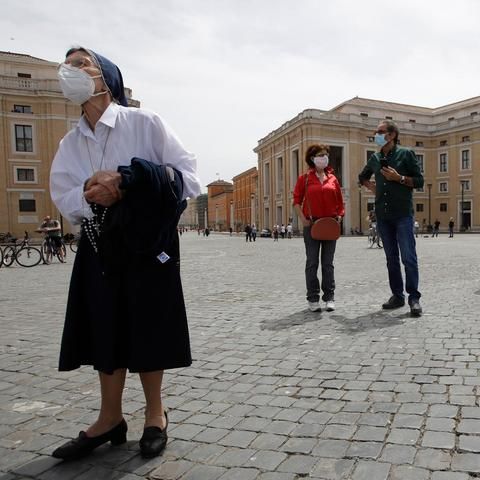
Updated: May 19, 2020 09:47 AM
These were the details of the news Coronavirus: Europe's top museum directors say everything has changed for this day. We hope that we have succeeded by giving you the full details and information. To follow all our news, you can subscribe to the alerts system or to one of our different systems to provide you with all that is new.
It is also worth noting that the original news has been published and is available at The National and the editorial team at AlKhaleej Today has confirmed it and it has been modified, and it may have been completely transferred or quoted from it and you can read and follow this news from its main source.

